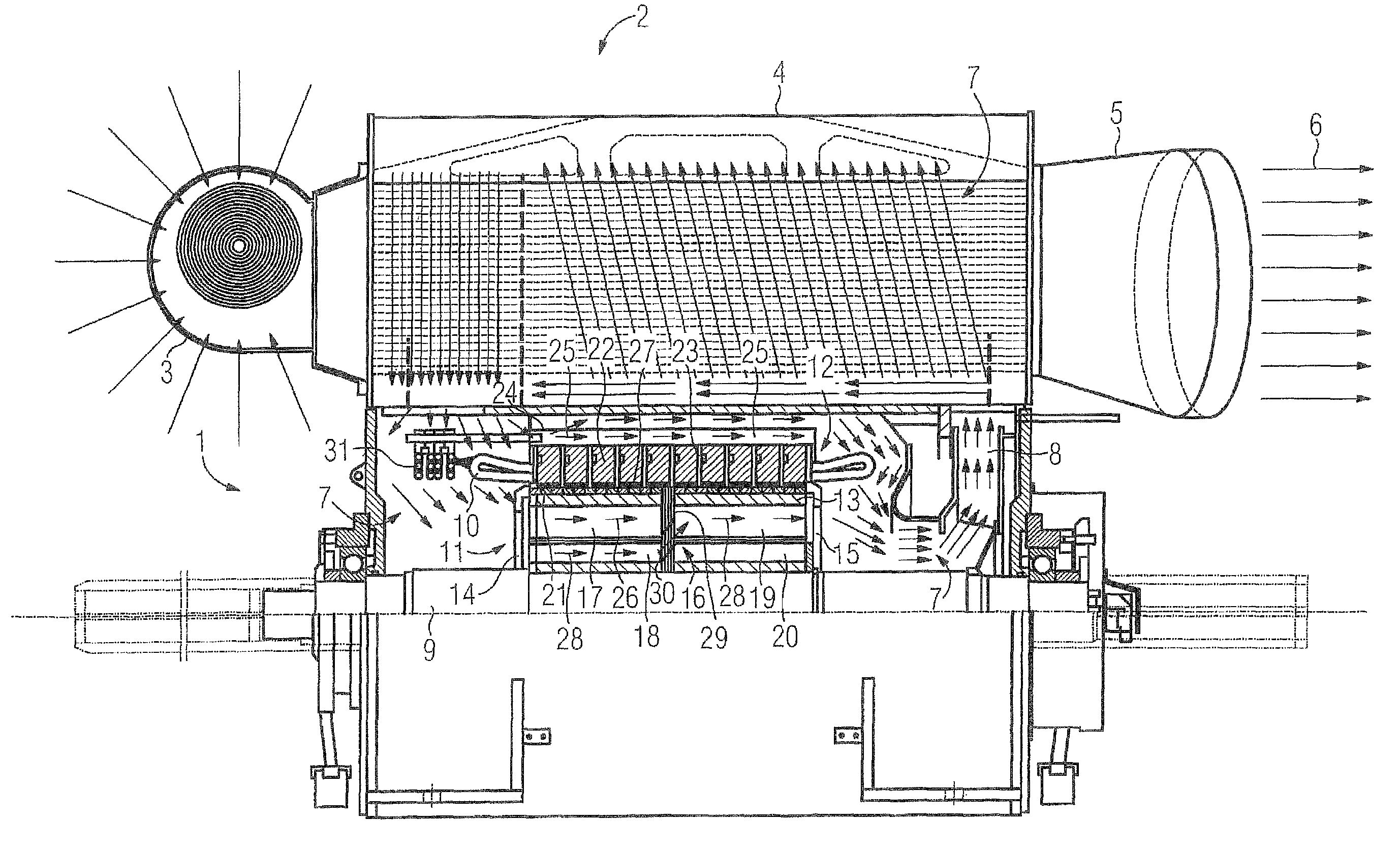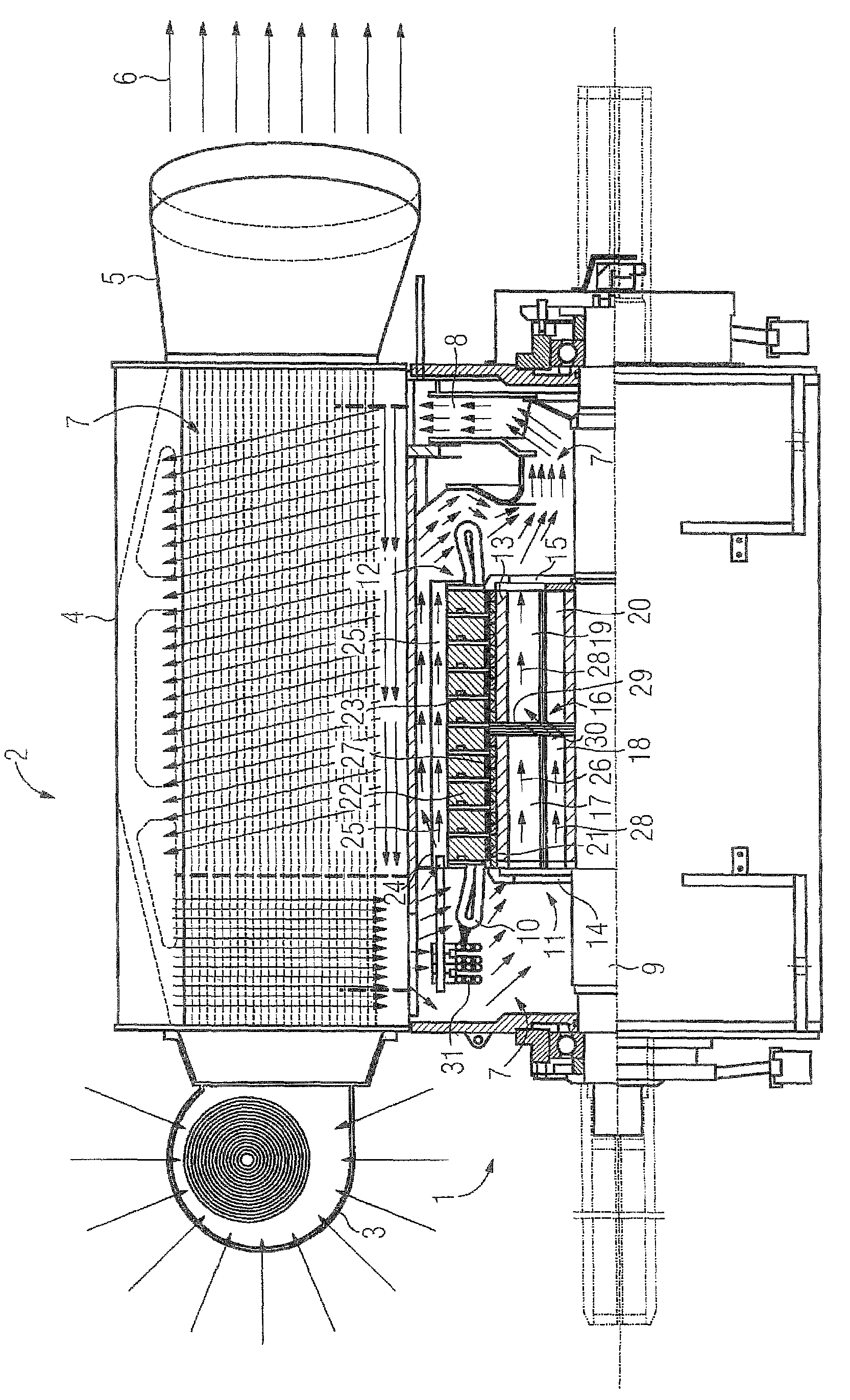Electrical machine with multiple cooling flows and cooling method
a technology of electric machines and cooling ducts, applied in the direction of dynamo-electric machines, electrical equipment, supports/enclosements/casings, etc., can solve the problems of relatively complex mounting of permanent magnets in corresponding pockets in the rotor, and the high level of complexity in mounting has been accepted to date, so as to reduce the size of the cross section of the cooling ducts in the rotor, the effect of high efficiency and positive
- Summary
- Abstract
- Description
- Claims
- Application Information
AI Technical Summary
Benefits of technology
Problems solved by technology
Method used
Image
Examples
Embodiment Construction
[0015]The exemplary embodiments described in greater detail below are preferred embodiments of the present invention.
[0016]The FIGURE shows a generator 1 having a cooling device 2. The cooling device 2 has a fan 3 for drawing in cooling air which it blows into a heat exchanger 4. The air flows from there to the outside through an outlet nozzle 5. This defines an external cooling circuit.
[0017]The heat exchanger 4 cools an internal, closed cooling circuit 7 using the external cooling circuit 6. The internal cooling circuit 7 is driven by a shaft-mounted fan 8 which is mounted on the B-side of the shaft 9 of the generator 1. The inner cooling circuit flows through the heat exchanger starting from the fan 8 and enters the winding overhang space on the A-side (drive side) of the generator. Here, said internal cooling circuit flows around the winding overhang 10 and the winding circuit 31 and then flows through the rotor 11 and the stator 12, as will be explained in greater detail below....
PUM
 Login to View More
Login to View More Abstract
Description
Claims
Application Information
 Login to View More
Login to View More - R&D
- Intellectual Property
- Life Sciences
- Materials
- Tech Scout
- Unparalleled Data Quality
- Higher Quality Content
- 60% Fewer Hallucinations
Browse by: Latest US Patents, China's latest patents, Technical Efficacy Thesaurus, Application Domain, Technology Topic, Popular Technical Reports.
© 2025 PatSnap. All rights reserved.Legal|Privacy policy|Modern Slavery Act Transparency Statement|Sitemap|About US| Contact US: help@patsnap.com


